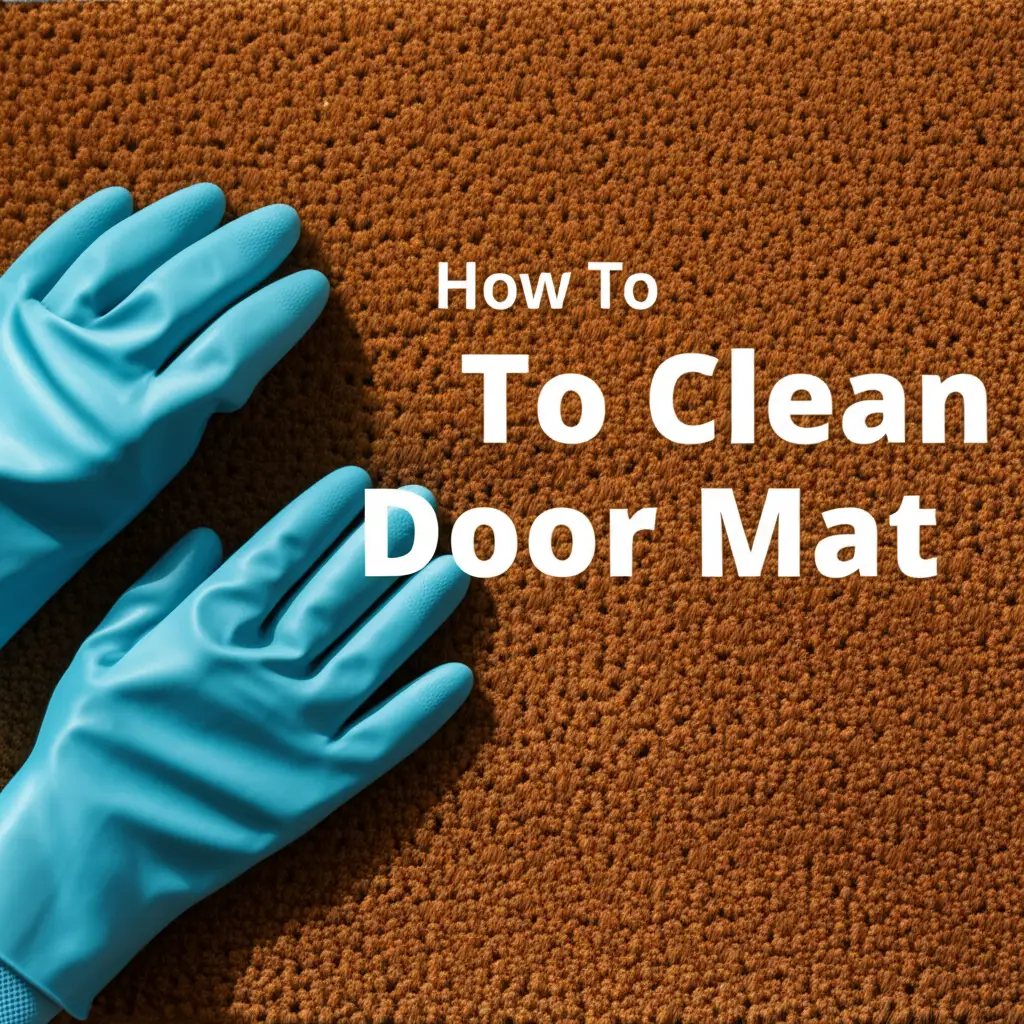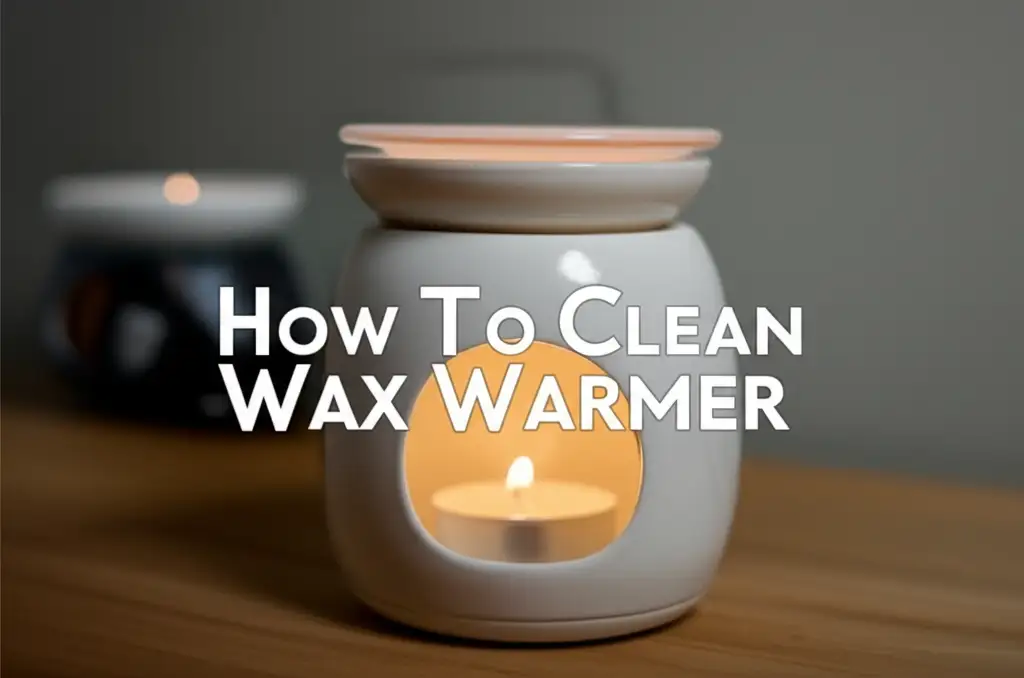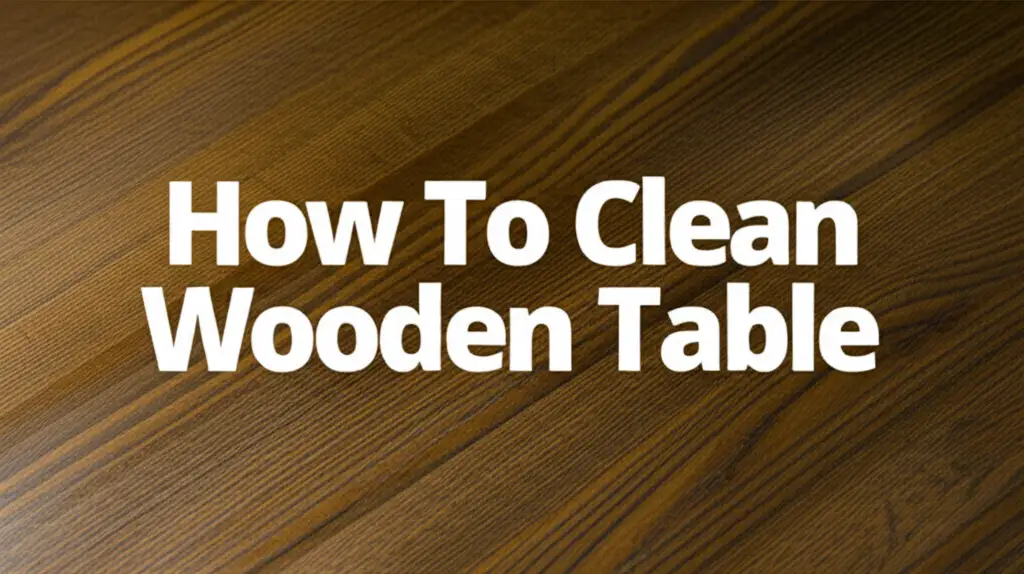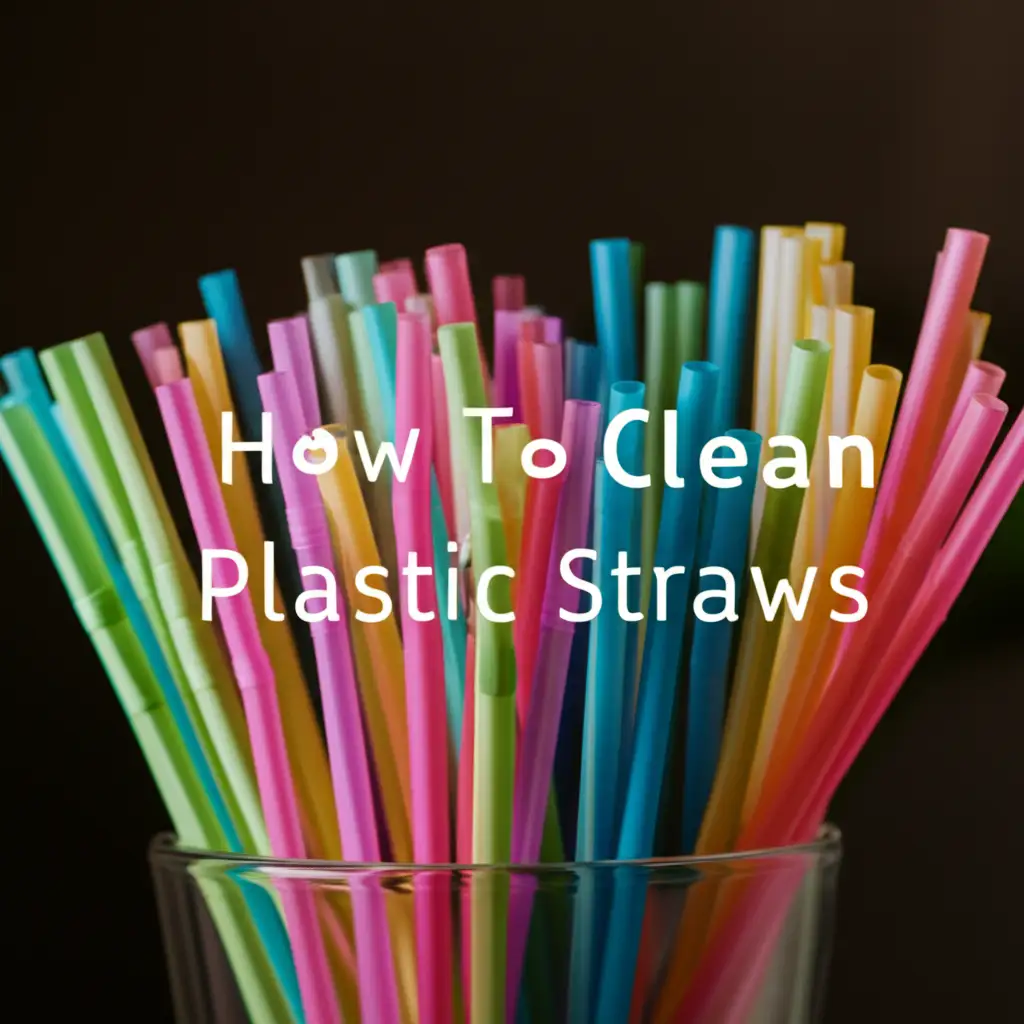· Home Cleaning · 19 min read
How To Clean Door Mat

Learn How To Clean Door Mat for a Spotless Home Entrance
My front door mat is often the first thing guests see. It welcomes people into my home and catches dirt from shoes. A dirty door mat, however, does the opposite. It tracks more grime inside and looks unsightly. This guide helps you understand how to clean door mat types effectively. We cover various materials and cleaning methods. You will learn easy steps to keep your entrance clean and inviting.
Keeping your door mat clean is not just about looks. It helps stop dirt from entering your house. This saves you time on indoor cleaning. A well-maintained mat also lasts longer. We will explore simple maintenance and deep cleaning techniques. You will find practical advice to make your door mat fresh again.
Takeaway
- Identify your door mat’s material before cleaning.
- Perform regular dry cleaning like shaking or vacuuming.
- Deep clean different materials with appropriate methods.
- Address specific stains promptly with targeted solutions.
- Dry your mat completely to avoid mold and damage.
To clean a door mat, first remove loose dirt by shaking or vacuuming. Next, identify the mat’s material. For most fabric mats, use a mild soap and water solution, scrubbing with a brush. Rinse thoroughly and allow it to air dry completely. Rubber or synthetic mats clean easily with a hose and scrub brush.
Understanding Your Door Mat Material
Knowing your door mat’s material is the first step to proper cleaning. Different materials require different cleaning methods. Using the wrong approach can damage your mat. I always check the label or feel the texture to understand what I am working with. This knowledge helps select the right tools and cleaning solutions.
Many door mats are made from natural fibers like coir. Coir mats come from coconut husks. They are durable and excellent at scraping dirt. Coir mats need dry cleaning methods mostly. Using too much water can cause damage.
Rubber or vinyl mats are common for outdoor use. They are waterproof and easy to rinse clean. These mats handle moisture well. They also prevent slipping at the entrance. Their non-porous surface makes cleaning simple.
Synthetic fiber mats include nylon, polypropylene, or polyester. These materials are often found in indoor or outdoor mats. They are tough and resist fading. Synthetic mats can often be hosed down or even machine washed, depending on their size and backing. They are versatile for many home types.
Cotton or other fabric mats are soft and absorbent. People often use them indoors, like in entryways or mudrooms. These mats can usually be machine washed. They absorb water and dirt effectively. Regular washing keeps them soft and clean.
Coir/Natural Fiber Mats
Coir mats are popular for their rustic look and scraping ability. They are great at trapping dirt and debris. Cleaning them needs a dry approach mostly. Wet cleaning can make them shed fibers or even rot. I always make sure these mats stay as dry as possible during cleaning.
First, shake the mat vigorously. This removes loose dirt and dust. You can also beat the mat against a wall or fence. This releases deeply embedded soil. For stubborn dirt, use a stiff brush. Brush in the direction of the fibers to dislodge particles.
A vacuum cleaner with a strong suction also works well. Use a hose attachment to get into the crevices. This picks up fine dust and small debris. Regular vacuuming prevents dirt buildup. It keeps your coir mat looking fresh. Avoid using water or harsh chemicals on coir mats.
Rubber/Vinyl Mats
Rubber and vinyl mats are durable and weather-resistant. They are perfect for outdoor use or high-traffic areas. These mats are very easy to clean. They do not absorb water like fabric mats. Their smooth surface allows for quick washing.
Start by shaking off loose dirt. You can also sweep large debris away. Then, hose down the mat with water. A garden hose works perfectly for this. You will see dirt and grime wash away easily.
For a deeper clean, use a mild soap and a scrub brush. Dish soap often works well. Scrub both sides of the mat to remove stuck-on grime. Rinse the mat thoroughly with water until no soap residue remains. Let the mat air dry completely before placing it back. These mats dry quickly.
Synthetic Fabric Mats (Nylon, Polypropylene)
Synthetic fabric mats offer good durability and color retention. They are popular for both indoor and outdoor use. Their fibers resist mold and mildew. This makes them a good choice for humid areas. Many synthetic mats are designed for easy cleaning.
Shake the mat to remove loose dirt. Then, you can vacuum it with a strong vacuum cleaner. For outdoor synthetic mats, hosing them down is very effective. Use a garden hose to rinse away surface dirt. A gentle scrub brush can help dislodge stubborn spots.
For indoor synthetic mats, spot cleaning works for small areas. Mix mild soap with water. Dab the solution onto the stain with a clean cloth. Blot the area dry afterwards. If the mat is machine washable, follow the manufacturer’s instructions. Always air dry synthetic mats thoroughly.
Cotton/Fabric Mats
Cotton or other fabric mats bring warmth and comfort to an entryway. They are soft and absorbent. People often use them indoors. These mats are excellent at trapping fine dust and moisture. They require regular washing to stay clean.
First, shake out any loose dirt from the mat. Vacuuming these mats is also very effective. Use a strong suction to remove embedded dust and debris. This prepares the mat for washing.
Most cotton or fabric door mats are machine washable. Check the care label for specific instructions. Use a gentle cycle with cold water and a mild detergent. Avoid hot water, as it can cause shrinking or color fading. Air dry the mat or tumble dry on a low heat setting. Ensure the mat is completely dry before reuse. If you have a stone bath mat, its cleaning process differs greatly from fabric mats. Stone mats need specific care, unlike these absorbent fabric types.
Basic Daily/Weekly Cleaning Steps for Door Mats
Regular cleaning keeps your door mat working well. It prevents dirt from building up. This also extends the mat’s lifespan. I find that quick, consistent cleaning makes a big difference. These basic steps are simple to do. They do not take much time.
These steps are good for all types of door mats. They remove the surface dirt. This prevents dirt from getting deep into the fibers. Starting with dry cleaning methods is always best. It saves water and cleaning solutions. Regular maintenance makes deep cleaning easier.
Shaking and Beating
Shaking and beating are the simplest ways to clean your door mat. This method works well for removing loose dirt, dust, and small debris. It is especially effective for natural fiber mats like coir. I usually do this outside to avoid spreading dirt indoors.
Pick up the mat and hold it firmly. Shake it vigorously to dislodge dirt. For larger or heavier mats, drape it over a railing or clothesline. Then, use a broom handle or a stick to beat the mat. Beat both sides of the mat. This action helps to release deeply embedded dirt and sand. You will see clouds of dust come off.
Continue shaking and beating until no more dust comes out. This step is a good first pass before any other cleaning. It prepares the mat for vacuuming or washing. It prevents dirt from turning into mud if you plan to wet clean.
Vacuuming
Vacuuming is a highly effective way to clean door mats. It removes dust, pet hair, and small particles. This method works well for all mat types, especially fabric and synthetic ones. I use my vacuum’s strong suction to pull dirt from the mat’s fibers.
Use a powerful vacuum cleaner with a brush attachment. For outdoor mats, a shop vac might be more effective. Move the vacuum slowly over the mat surface. Go over the mat multiple times. This ensures you pick up as much dirt as possible.
For mats with deep grooves or patterns, use a crevice tool. This attachment gets into tight spaces. Vacuum both sides of the mat if possible. Regular vacuuming prevents dirt from building up. It keeps your mat looking neat and fresh.
Deep Cleaning Different Door Mat Types
Sometimes, basic cleaning is not enough. Your door mat needs a thorough deep clean. This removes embedded dirt and refreshes the mat. The method you use depends heavily on the mat’s material. Always check the care instructions first.
Deep cleaning helps remove stubborn stains and odors. It also prolongs the mat’s life. I adjust my deep cleaning approach based on the mat type. Some mats can handle a good scrub, while others need gentle care. This section provides specific steps for various materials.
Deep Cleaning Coir Mats
Deep cleaning coir mats is different from other mats. You generally avoid excessive water. Water can damage the natural fibers. My goal is to remove stubborn dirt without soaking the mat. This preserves its structure and look.
After shaking and vacuuming, use a stiff bristle brush. Brush the mat vigorously in the direction of the fibers. This loosens any dirt still stuck. For really tough spots, you can use a small amount of dry carpet cleaner or baking soda. Sprinkle it on the spot.
Let the cleaner sit for a few minutes. Then, brush it into the fibers. Vacuum up the powder thoroughly. For a quick refresh, you can lightly mist the mat with a hose. Do not soak it. Immediately blot excess water with a towel. Allow the mat to air dry completely and quickly. Make sure it is in a sunny, airy spot.
Washing Rubber/Vinyl Mats
Washing rubber and vinyl mats is straightforward. These materials are very durable and water-friendly. They do not absorb water, making them easy to clean. My approach is to get them wet and scrub away the grime. This method brings them back to life quickly.
Take the mat outside or to an area you can get wet. Hose it down thoroughly with water. Use a strong stream to remove loose dirt. Mix a few drops of mild dish soap with water in a bucket. Use a stiff scrub brush dipped in the soapy water.
Scrub both sides of the mat with the brush. Pay extra attention to textured areas where dirt collects. Rinse the mat completely with clean water. Make sure no soap residue remains. Hang the mat or lay it flat in the sun to dry. These mats dry very fast. This process can be similar to cleaning a dish drying mat, which also tolerates water well.
Cleaning Synthetic Fabric Door Mats
Synthetic fabric mats are quite versatile for cleaning. Their fibers repel water and resist stains well. This makes deep cleaning easier than with natural fibers. I often use a hose for outdoor synthetic mats. For indoor ones, spot cleaning is preferred.
For outdoor synthetic mats, hose them down first. Use a mixture of mild detergent and water. Apply it to the mat with a soft brush. Scrub gently to lift dirt. Rinse thoroughly with clean water. Ensure all soap is gone. Hang or lay flat to air dry completely.
For indoor synthetic mats, spot clean spills immediately. Blot the stain with a clean cloth. Do not rub. Mix mild soap with water. Apply the solution to the stained area. Work it in gently with a cloth. Blot dry with a clean towel. For overall cleaning, if the mat is too large for a machine, you can follow the outdoor method but use less water. Always ensure complete drying to prevent mildew. Just as you might clean a desk mat with targeted methods, synthetic door mats also benefit from specific, gentle care depending on their use.
Machine Washing Fabric Mats
Many smaller fabric door mats are machine washable. This is the easiest way to deep clean them. It gets them really fresh. Always check the mat’s care label first. This ensures you do not damage the mat. My go-to method for these mats is often the washing machine.
First, shake off any loose dirt outside. This prevents dirt from clogging your washing machine. Place the mat in the washing machine by itself. Add a mild laundry detergent. Use cold water and a gentle cycle setting. Hot water can cause the mat to shrink or colors to fade.
After the wash cycle, remove the mat promptly. Air dry the mat by hanging it or laying it flat. If the label allows, you can tumble dry on a low heat setting. Ensure the mat is completely dry before placing it back. A damp mat can grow mold.
Removing Common Stains from Door Mats
Door mats face many types of stains. Mud, oil, and pet accidents are common. Acting fast is key to successful stain removal. Different stains need different approaches. I always have a few cleaning supplies ready for quick action. This section covers common stain types.
Prompt action prevents stains from setting. The longer a stain sits, the harder it is to remove. Always blot, do not rub. Rubbing can spread the stain. It can also damage the mat fibers. These tips help keep your mat looking good.
Mud Stains
Mud is the most common stain on a door mat. It comes from shoes and paws. Removing mud is easiest when it is dry. My first rule for mud is patience. Let the mud dry completely.
Once the mud is dry, scrape off as much as you can. Use a dull knife or a stiff brush. Be careful not to damage the mat fibers. After scraping, vacuum the area thoroughly. This removes the remaining dry particles.
If a stain remains, mix a small amount of mild liquid detergent with water. Dab this solution onto the stain with a clean cloth. Blot the area gently. Do not rub. Continue blotting until the stain lifts. Rinse the area by blotting with a damp cloth. Finally, blot dry with a clean, dry towel. Allow the mat to air dry fully.
Oil and Grease Stains
Oil and grease stains are tricky but removable. They often come from car oil or food spills. Quick action is important for these stains. My method focuses on absorbing the grease first. This stops it from spreading further into the fibers.
First, blot excess oil with a paper towel. Do not rub, just press to absorb. Then, sprinkle an absorbent material like cornstarch, baking soda, or talcum powder directly onto the stain. Let it sit for at least 15-30 minutes, or even overnight for stubborn stains. The powder will absorb the oil.
Afterward, vacuum up the powder. If a stain remains, apply a small amount of dish soap directly to the spot. Dish soap is excellent at cutting grease. Work it in gently with your fingers or a soft brush. Rinse by blotting with a damp cloth. Blot dry with a clean towel. Repeat if needed.
Pet Accidents
Pet accidents happen, and door mats can be victims. Urine stains need immediate attention. Pet urine can leave odors and stains if not treated quickly. My focus is on neutralizing the odor and removing the stain. This prevents pets from remarking the spot.
First, blot up as much of the urine as possible. Use old towels or paper towels. Press firmly to absorb the liquid. Avoid rubbing, as this pushes the urine deeper. After blotting, rinse the area with cool water. This dilutes the urine.
Then, use an enzymatic cleaner designed for pet stains. These cleaners break down the proteins in urine. Follow the product instructions carefully. Apply the cleaner to the stained area. Let it sit for the recommended time. Blot the area dry with a clean towel. If you have a silhouette mat that has been affected, its cleaning process might require specific, gentler methods given its delicate nature. Ensure the mat dries completely to prevent any lingering odors.
Drying Your Door Mat Effectively
Proper drying is as important as cleaning. A damp door mat can develop mold and mildew. It can also start to smell unpleasant. This can damage the mat fibers over time. I always make sure my mats are completely dry before putting them back.
Drying prevents deterioration and keeps your mat fresh. Air circulation is key for effective drying. The method depends on the mat type and size. Ensuring thorough drying extends the mat’s life. It also keeps your entrance healthy.
For smaller, lighter mats, hanging them works best. Hang them over a clothesline or railing. This allows air to circulate around both sides. Sunlight can also help speed up the drying process. For heavier mats, lay them flat on a clean, dry surface. Elevating them slightly can improve airflow.
If drying indoors, place the mat in a well-ventilated area. You can use a fan to speed up drying. Never put a damp mat back on the floor. It can damage your flooring. Always feel the mat to ensure it is completely dry before placing it back at the door.
Maintaining Your Door Mat for Longevity
Proper maintenance extends your door mat’s life. Regular care saves you money in the long run. It also keeps your home entrance tidy. I consider consistent maintenance a key part of keeping my home clean. Simple habits make a big difference.
Rotate your door mat regularly. This ensures even wear and tear. If your mat is reversible, flip it over periodically. This can double its lifespan. Rotating also exposes different parts to sunlight, which can help with odors.
Protect your mat from harsh weather. If heavy rain or snow is expected, bring outdoor mats inside. This prevents excessive moisture damage. Moisture can lead to mold and rot. It also keeps the mat from freezing.
Consider using a protective spray on some mats. Fabric protector sprays can repel water and stains. This makes future cleaning easier. Always test the spray on an inconspicuous area first. This checks for colorfastness.
Address spills and dirt immediately. Do not let dirt sit for long periods. The quicker you clean, the easier it is to remove. Regular shaking and vacuuming are your best defense. These small steps add up to a longer life for your mat.
When to Replace Your Door Mat
Even with the best care, door mats do not last forever. Knowing when to replace your mat saves you effort. A worn-out mat does not perform its job well. It also detracts from your home’s appearance. I look for specific signs that tell me it is time for a new one.
Fraying edges are a clear sign of wear. When the fibers start to come apart, the mat loses its function. It also becomes a tripping hazard. A mat with heavily frayed edges looks unsightly. Replacing it is a good idea.
Loss of effectiveness is another sign. A good door mat traps dirt. If your mat no longer scrapes off debris, it is not working. You might notice more dirt being tracked into your home. This means the mat is worn out.
Persistent odors that do not go away after cleaning are a problem. Some odors can embed deeply in the fibers. This happens especially with pet accidents or mold. If cleaning does not fix the smell, it is time for a fresh start.
Tears, holes, or cracking backing mean replacement. These damages compromise the mat’s integrity. A cracked rubber backing can leave marks on your floor. A mat with holes looks neglected. Replacing it improves safety and appearance.
FAQ
How often should I clean my door mat? I clean my door mat weekly for basic maintenance. This involves shaking and vacuuming. Deep cleaning depends on usage. For high-traffic areas or during bad weather, deep clean every 1-2 months. Low-traffic mats might need deep cleaning only a few times a year. Regular cleaning prevents dirt buildup.
Can I wash my door mat in a washing machine? Many smaller fabric or synthetic door mats are machine washable. Always check the care label first. Use cold water and a gentle cycle with mild detergent. Air dry or tumble dry on low heat. Do not machine wash coir, rubber, or very large mats.
What is the best way to clean a coir door mat? The best way to clean a coir door mat is dry. Shake or beat it outdoors to remove loose dirt. Use a stiff brush to dislodge embedded particles. You can vacuum it with a strong suction. Avoid excessive water, as it can damage the natural fibers.
How do I remove stubborn stains from my door mat? For stubborn stains, act quickly. Identify the stain type first. For mud, let it dry then scrape and vacuum. For oil/grease, apply an absorbent powder like cornstarch, then vacuum and use dish soap. For pet stains, blot immediately and use an enzymatic cleaner. Always blot, do not rub.
Should I clean indoor and outdoor door mats differently? Yes, indoor and outdoor door mats often require different cleaning methods. Outdoor mats (like rubber, heavy-duty synthetic) handle hosing down and scrubbing better. Indoor mats (fabric, cotton) might be machine washable or require more delicate spot cleaning. Material is the key factor, not just placement.
How do I prevent my door mat from getting dirty quickly? You can prevent fast dirt buildup by having a good “wipe off” routine. Encourage everyone to wipe their feet thoroughly. Place a secondary, absorbent mat just inside the door for extra protection. Shake or vacuum the mat regularly, even daily if it gets heavy use.
Conclusion
Keeping your door mat clean is simple, but important. It protects your floors and enhances your home’s appearance. We have covered methods from quick shakes to deep washes. You now know how to clean door mat types based on their materials. Regular care ensures your mat stays effective and lasts longer.
Remember to identify your mat’s material first. This guides your cleaning choices. Whether it is coir, rubber, or fabric, a tailored approach makes all the difference. Incorporate regular dry cleaning into your routine. Address stains quickly to prevent them from setting. Your front entrance will always look welcoming and clean. A clean door mat truly sets the stage for a clean home.
- door mat cleaning
- mat maintenance
- outdoor mats
- indoor mats
- cleaning tips




